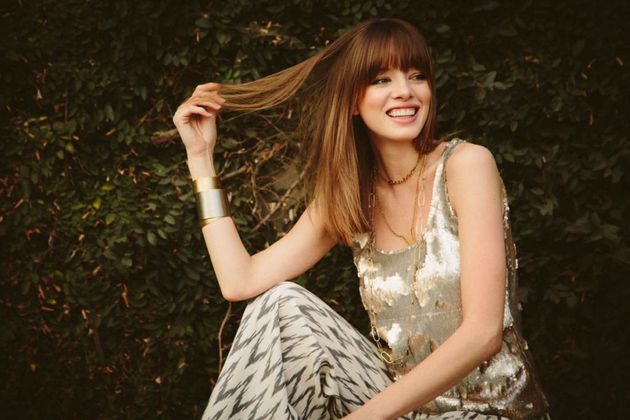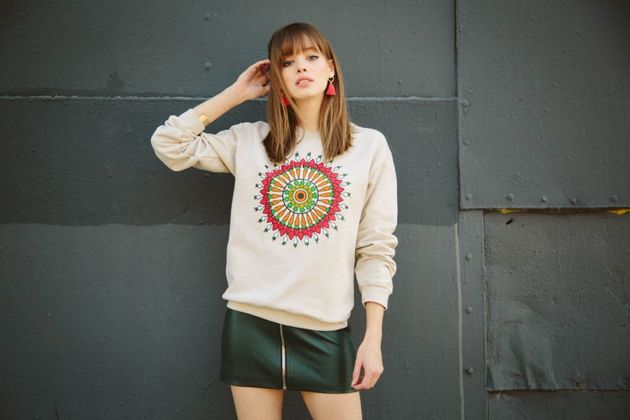
I used to be a big shopper.
As a university student, living large on my student loans (ah, the good old days, before bills, council tax and having to repay said student loans!), I would buy something new every month. I had just gotten into fashion – I was in fact a fashion student – and all I wanted was to find my style and I thought this could only be achieved by trying (i.e. buying) as much as I possibly could. Oh how wrong I was.
As I bought a new top that I in no way needed every month, I quickly amassed heaps of what can only be described as nondescript, cheap, crap. When sifting through it all, years later, I was amazed at how, and most importantly why, all those things had found their way into my wardrobe. Those garments weren’t significant to my style. They weren’t significant to anyone’s style. They were anonymous, soulless, and completely unnecessary.
When I went vegan almost six years ago, I got into the habit of thinking of others first and myself second when shopping: did animals have to suffer and die for whatever I was buying? I left a pale-pink biker jacket on the shelf because it was made of lambskin. And I also started learning more about how, where, and by whom, my clothes were made.

The conversation about ethical shopping had just began when I transitioned to veganism. It was an eye-opener to realise that our (my!) hunger for constantly updating our wardrobes is costing the Earth. Literally. Books like To Die For by Lucy Siegle and Green is the New Black by Tamsin Blanchard struck a chord with me. Issues such as textile waste – did you know over 300k tonnes of clothing were thrown away in 2016 in the UK alone? – which had never been on my mind before, now took hold. I realised that mindlessly buying things that I didn’t really need just so I could get my spending fix, while underpaid workers, many of whom underage, were living in slavery to keep up with our constant demand for more, was not in line with the way I wanted to live – or dress.
Then, once I saw the price tag that is often attached to ethical fashion, I was discouraged. Keeping up my shopping habits while choosing ethically was incompatible with my limited budget. So recently, after reading the extremely informative and interesting book, A Life Less Throwaway by Tara Button, I came to a conclusion: my contribution to the ethical fashion movement would be to shop less.
I wanted each piece in my wardrobe to mean something to me. I wanted to wear my clothes for up to a decade, and I wanted to do so without spending more than I currently was. I wanted to have two handbags rather than ten, eight of which were a bit broken here and there. And speaking of broken, I no longer wanted to throw stuff away when it broke. I wanted to first try to see if I could fix it, prolonging its life. I wanted to create memories with my clothes, and to keep creating new outfits with them, discovering new combinations after years.
To test my dedication to this new, mindful way of shopping, I set a new wardrobe rule for myself: everything I bought with my own money had to either be from an ethical label, or second hand. And, as always, everything had to be vegan.
A year after making this promise, I had bought:
- Two tops from Zara’s organic-cotton Join Life collection, each at the cost of £8
- A top from Oxfam’s charity shop, at the amazing cost of £3
- A pair of water-based-polyester gloves from H&M Conscious Collection, at the cost of £8
At a total of £28 for the entire year.
Disclaimer: as a digital fashion magazine editor, I sometimes receive sponsored clothing, so the above is not the total amount of new clothing that came into my wardrobe this year, but this is everything I used my own money to buy.
A note on big chains: I wholeheartedly support, and always will support, big chains’ sustainable ventures. In fact, I am their biggest cheerleader. Nothing sends a stronger message to the company that customers care about ethics.
What have I learned?
I learned a lot about what I want my personal style to be (if you haven’t yet, read The Curated Closet by Anuschka Rees! An amazing tool in building your wardrobe) and what I need to get there. I also learned how to be creative with what is already in my wardrobe, and how to shop for things that will last. I bought three tops because I had bottoms but nothing to wear them with. So I chose tops in neutral colours and with a good fit. And I used them constantly. I bought gloves because I lost mine – simple. I chose black, with no detailing, because that way it is a no-brainer to slip them on with my winter-wear. When colder days rolled around, I brought out a winter coat that I’d had since 2010, cleaned it and changed its buttons – and it kept me warm all winter. And it will still be in my wardrobe next winter. When my shoes break, I get new soles and have them fixed rather than buy new ones. And when the time will come to buy new ones, I will choose well.
I will continue my new shopping habits way beyond the year of almost no shopping – hoping that my purchases will last, inspire, and help me be creative for years to come.
Photos by Brandon Kelly. A version of this was previously published on Vilda Magazine